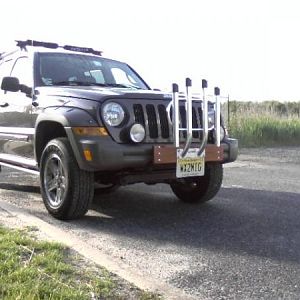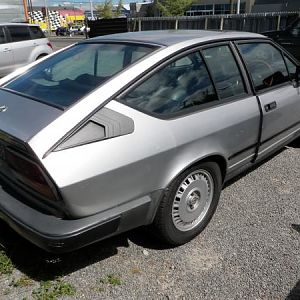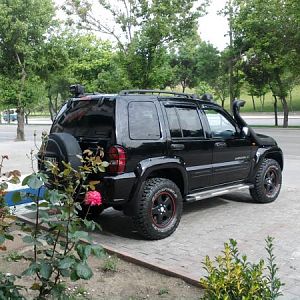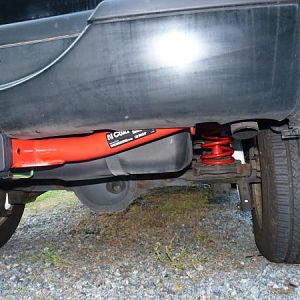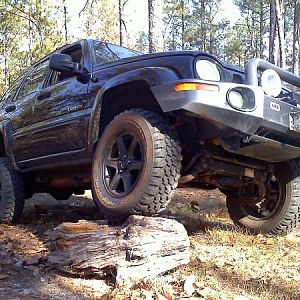Necessary Terminology to understand before reading this:
Driver - a device used to reproduce audible frequencies
SubWoofer - A driver designed to reproduce frequencies between 20Hz-200Hz
Speaker - A driver in an enclosure.
I often refer to a subwoofer as a driver because I'm just old school like that.
First of all its important that you don't just look at the power ratings. A high power sub can be fairly quiet in certain enclosures, so it is important to take that into consideration. It simple actually, you have a few options.
1. Pretend you don't notice. This is most often practiced by the typical "I bought it from bestbuy" people.
2. Don't go for SPL, instead shoot for sound quality (SQ), if you take a look at sqliberty's jeep you will see that his setup is geared to high quality, precise sound reproduction. In a setup like this you will deffinetly have an amp on every speaker in the vehicle as well as an array of crossovers, ect...
3. Go for SPL (Sound Pressure Level), Ignore the high range frequencies and try to go as LOUD as is possible. This is probably just as technical as building an SQ system. In a SPL bias system you can expect that you are going to drown out the highs because your only real goal is for VERY loud bass, loud enough for unsafe listening is generally a good goal. Needless to say an SPL system is not a good daily driver.
4. Then there is the hybrid system(which I am building, not to be confused with my dual purpose concept). A hybrid system is fairly common for self appointed system architects. It is the middle of the road in every sense; but usually has slight bias towards SPL or SQ. It is the best all-around non competitive system. Generally it is more than enough to scare the hell out of average people, but not enough to make ears bleed. In the same aspect it sounds good enough that most people think it is the most beautiful thing they've ever heard. (Of course most people can't comprehend competition level SQ.)
There is never an easy way to describe Power Vs. Performance.
I'll start by saying that the power rating of a subwoofer is its ability to disipate energy. (in watts)
Yours for example, is able to opperate continuously with 320 watts of power.(RMS power) Whereas on the the other hand, your max rating is the amount of energy that can be disipated in a quick burst of power.(MAX power)
The more power that your subwoofer can handle the better control it has over its performance. Lower frequencies require more energy in order to be reproduced, and increasing the volume also requires more energy. So a 320 watt RMS driver will have some serious trouble playing a 20Hz sine wave at 130db.(I am sure there is an equation out there to describe this)
Here an example with my driver:
Kicker S15L7 15"
RMS 1000W
The standard for RMS ratings is as follows:
"The maximum amount of power a driver is able to effectively disipate for a period of 8 hours in a free air enviroment"
THIS DOES NOT MEAN THAT YOU HAVE YOUR USE THAT MUCH POWER!
A subwoofer will function very nicely at even half of its RMS power. But any lower than that is just a waste of a driver with more potential than is being used.
(although I like pushing my system to the limit, its does not mean you have to)
Max 2000W
This means that if I get an amp capable of putting out 2000W I can run the driver at that power rating for a brief period.(Generally for high SPL, maybe 5 seconds tops)
Note: Max power ratings ONLY APPLY TO COMPETITION SYSTEMS. If you are not competing than the Max rating has nothing to do with you.
That is unless, you happen to be building a hybrid system and have VERY good knowledge of your system's power handling abilities, in which case you can burp it to show off. But still only for a few seconds.
I run my L7 at 1200-1400W RMS which means that I need to be very careful low long and hard I am running the driver. If I noticed it is getting too hot I just back off the subwoofer volume a little bit. I do not reccomend a system like mine unless you really know your driver.
I don't know how directly that answers your question, and I am sure much of this you already know. But I figured this would be a good opportunity for a brief tutorial on the basics.


